ミズキは水辺に生え、傘のような樹冠、階段のような枝葉、雪のような白花。春先に枝を切ると水のように樹液が滴り落ちる「水の木」です。
Giant dogwood grows on the waterside, with an umbrella-like canopy, stair-like branches and leaves, and snow-like white flowers. It is a “water tree” where sap drips like water when you cut a branch in early spring.
【仮名】ミズキ, クマノミズキ
【和名】水木, 熊野水木
【英名】Giant Dogwood, Swida
【学名】Cornus controversa
【誕生】05/ 09
【開花】04, 05, 06月
【花色】White
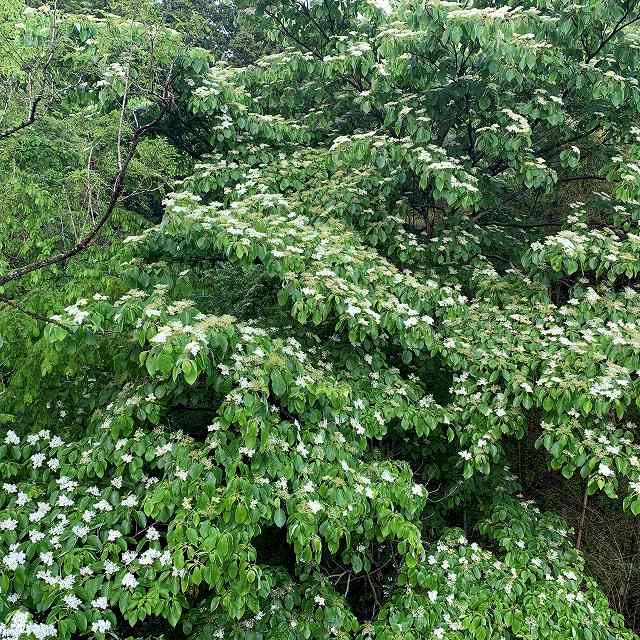
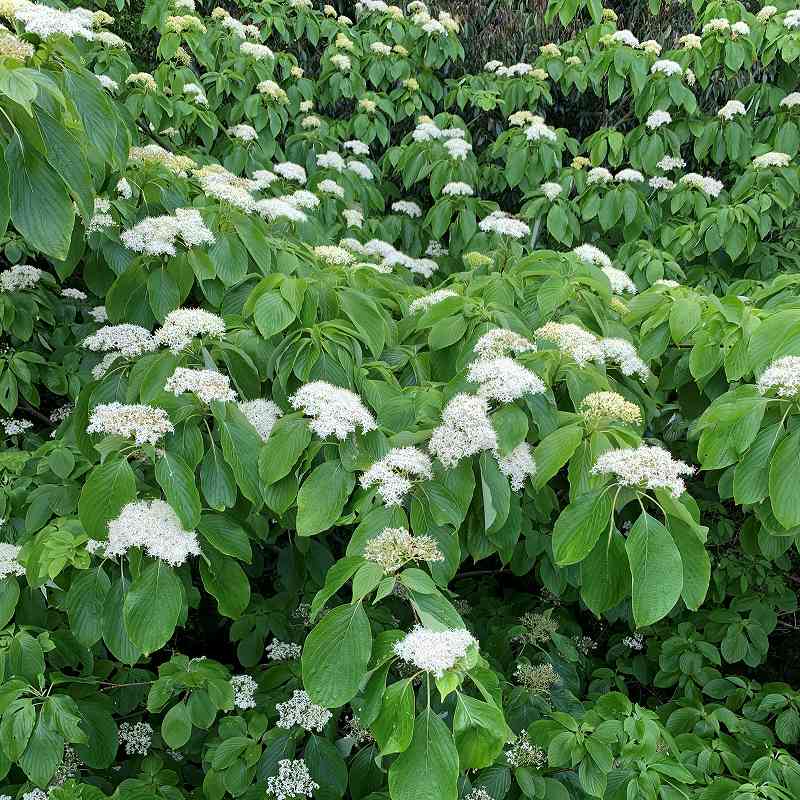
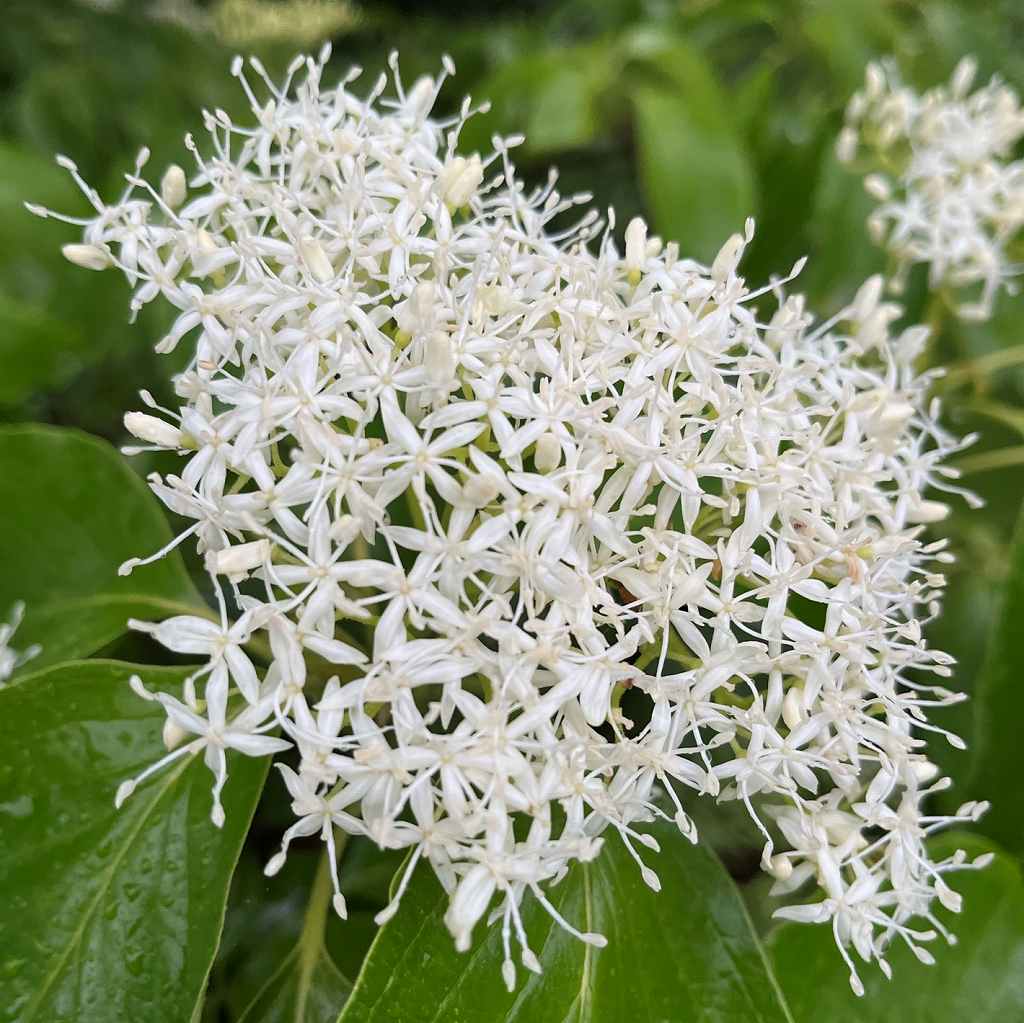

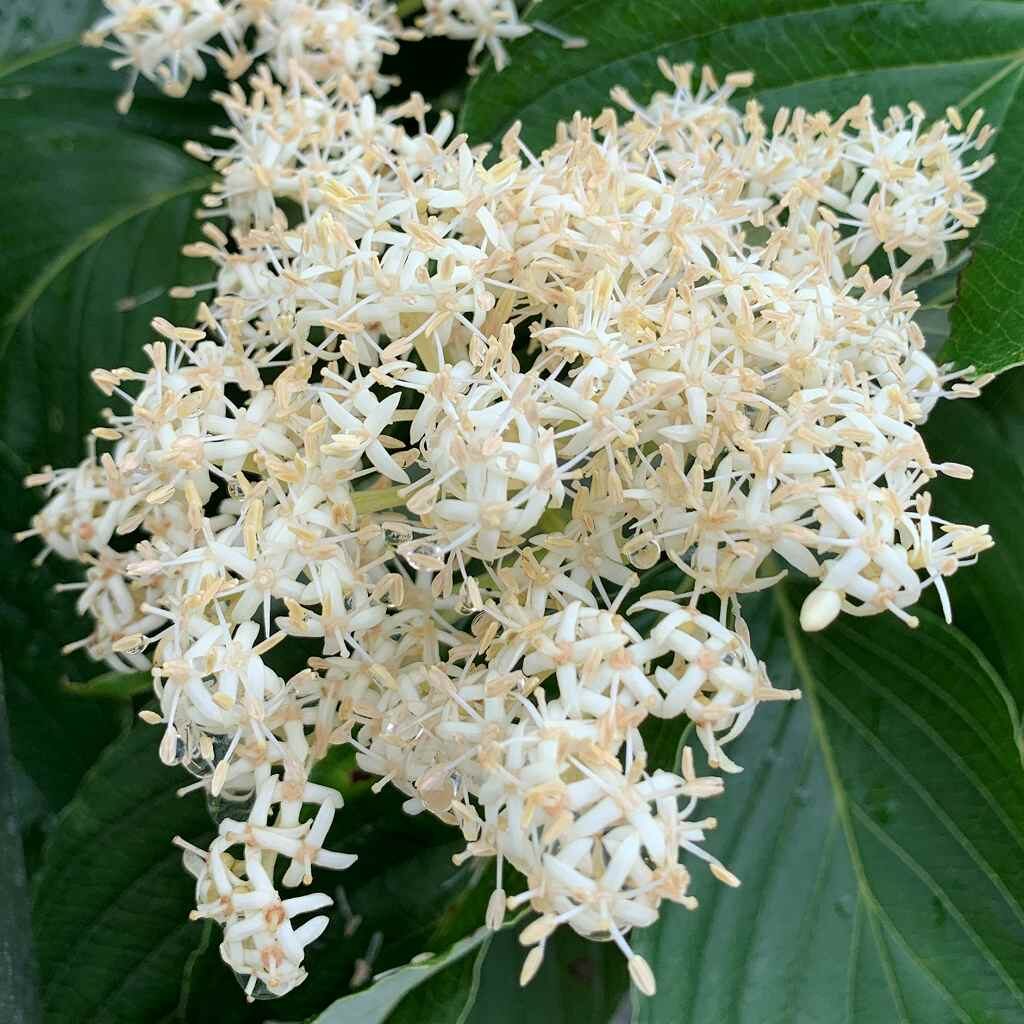
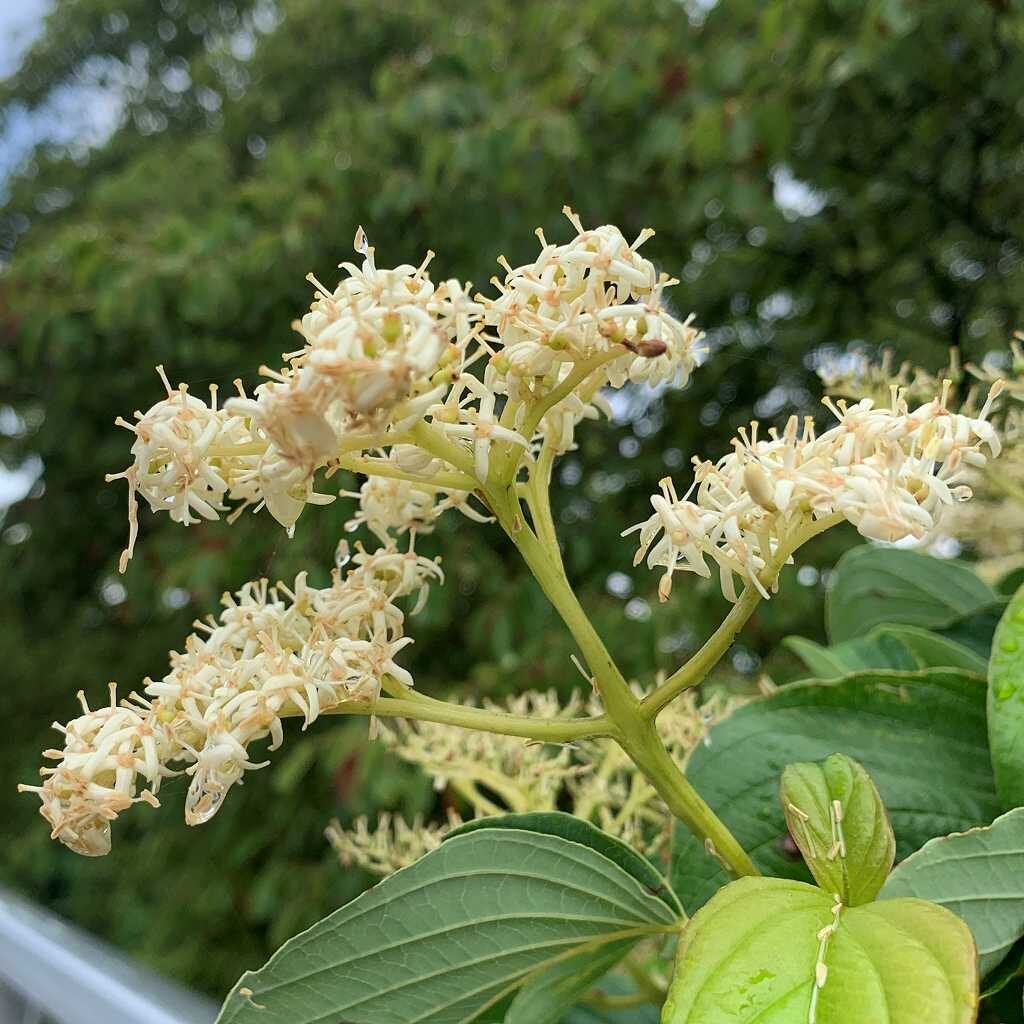
ミズキ
ミズキの生態
ミズキはミズキ科の落葉高木。ヒマラヤから中国、台湾、朝鮮、日本、南千島まで分布しています。国内では北海道から本州、四国、九州まで分布。低山や原野の水辺に自生しています。成長が早く、公園や庭園に植栽。枝ぶりから別名 「車水木」、用材から「箸の木」と呼ばれます。
ミズキの名前
ミズキの名前は、よく水辺に生えていて、樹液が多いことに由来。根から水を吸い上げる力が強く、春先に枝を切ると水のように樹液が滴り落ちます。文字通り「水の木」。樹液は糖分を含むため、流れ出たところに微生物が繁殖します。そのため、樹皮の上に赤い筋ができることも。
ミズキの形態
ミズキは枝先に小さな白い花が密生し、花弁が4枚、雄しべが4本。花後は球形の核果を結び、熟すと黒紫色になります。葉は互生で、先の尖った楕円形。幹は真っ直ぐ伸び、枝は互い違いに出て水平に伸び、扇状に広がります。傘のような樹冠、階段のような枝葉、雪のような白花。
ミズキの近縁
ミズキの近縁「クマノミズキ」はミズキによく似ています。和名は三重県熊野地方に由来するものの分布が広く、国内は本州から四国、九州まで、国外は朝鮮から台湾、中国、ヒマラヤ、アフガニスタンまで。ミズキとの違いは開花が1カ月ほど遅いこと、葉が対生していることです。
ミズキの利用
ミズキは、材質が緻密で割れにくい一方、加工しやすい軟らかさ。白い木肌も美しく、寄木細工、こけし、玩具、印鑑、漆器、箸などに用いられます。そして、冬に美しく色づく紅い枝。その枝に丸めた餅や団子を刺し、作物の豊作を祈念する、小正月の「繭玉飾り」に用いられます。
Giant Dogwood
Giant dogwood is a deciduous tree of the dogwood family. It is distributed from Himalayan to China, Taiwan, Korea, Japan and South Chishima. In Japan, it is distributed from Hokkaido to Honshu, Shikoku, and Kyushu. It grows naturally on the waterside of low mountains and wilderness. It grows fast and is planted in parks and gardens. It is also called “Wheel Mizuki” because of its branches, and “Chopsticks Tree” because of its lumber.
The name of the giant dogwood is derived from the fact that it often grows near the water and has a lot of sap. It has a strong ability to suck up water from the roots, and if you cut a branch in early spring, the sap will drip like water. Literally “water tree”. Since sap contains sugar, microorganisms grow where it flows out. Therefore, red streaks may form on the bark.
Giant dogwood is densely populated with small white flowers at the tips of its branches, with four petals and four stamens. After flowering, it bears a spherical drupe and turns black-purple when ripe. The leaves are alternate and pointed oval. The trunk grows straight, the branches stagger and grow horizontally, spreading like a fan. Umbrella-like canopy, stair-like branches and leaves, snow-like white flowers.
“Cornus macrophylla”, which is closely related to giant dogwood, is very similar to giant dogwood. Though the Japanese name is named after the Kumano region of Mie prefecture, they are widely distributed from Honshu to Shikoku and Kyushu in Japan, and from Korea to Taiwan, China, Himalayas and Afghanistan overseas. The difference from Mizuki is that the flowering is about one month late and the leaves are opposite to each other.
Giant dogwood is made of a dense material and is hard to break, but it is soft and easy to process. The white wood surface is beautiful, and it is used for parquet, kokeshi dolls, toys, seals, lacquer ware, chopsticks, etc. And the red branches that are beautifully colored in winter. It is used for the “cocoon ball decoration” of the First Full Moon Festival, in which rolled rice cakes and dumplings are stabbed on the branches to pray for a good harvest of crops.


